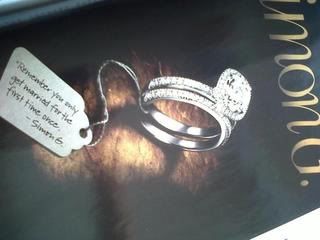"His death drew sharp criticism from animal activists, who had complained for years that Berlin Zoo officials should not have hand-reared the cub after his mother abandoned him in 2006."http://www.nydailynews.com/news/world/2011/03/21/2011-03-21_video_surfaces_showing_knut_the_polar_bears_death_tourists_gasp_at_bears_final_m.html#ixzz1HGKof3RS
3/21/11
3/19/11
Doug Varone’s “Chapters” Like a Novel You Can’t Put Down
by Natalie Walters
The 20 emotive and aptly titled “chapters” that comprise Doug Varone’s Chapters from a Broken Novel at the Joyce until Sunday feel, to an audience member, like one’s own biography. Skillfully danced to an original, cinematic-sounding score by David Van Tieghem, Chapters takes the viewer through an emotional landscape to which dancers and non-dancers alike can relate.
Varone’s loose but purposeful and clean style was exhibited from the beginning, with signature arm slashes and backward reaching ball-changes on display in the first chapter, Spilling the Contents. A beautiful falling-and-getting-back-up-again themed solo, Another Failure, danced by the mesmerizing Natalie Desch, immediately followed. Her frustration, so expertly choreographed as to be credible, was palpable. Her facial expression read as true, and even her grunts of distress seemed to come from a real place. But when she emoted it was not—and this holds true in general for Varone and Dancers—melodramatic.
Varone has a great sense of where the line between the realistic and the overly theatrical rests. There were two dances where this was particularly true: Erased by Degrees and Ron Tells the Truth. It speaks of Doug Varone’s Dancers’ performance skill that they evoke such empathy from the audience as they do with these dances. Erased has the power to put your stomach in knots and your shoulders up to your ears as you watch Erin Owen react to in-your-face-attacks by her fellow dancers. But I have never seen anything so captivating and honest as Ryan Corriston’s internal struggle with Truth. He shook his head, clapped his hands over his mouth, even audibly sucked in his breath. He bit his knuckles, and turned beet red, fighting impulses. This chapter displayed Varone’s genius and Corriston’s talent melding into something heart-wrenchingly real, to which any human watching it would unavoidably relate.
But Varone also knows how to manipulate this theatrical line, to provide the evening with a little comic relief. In sharp contrast with the tension of Erased, Tile Riot let us into an intimate bathroom self-celebration by Owen. In it, she admired herself in the mirror, toward the audience, putting on lipstick and primping. She did a little dance, seducing the imagined mirror. It was endearing, and Owen was adorable—and highly versatile, having also played the role of the trodden-upon earlier in the show.
Some chapters were admittedly less memorable than others. Repeated Routines, for instance, was exactly what it sounds like, as was Rewind. Often the group dances became a bit blurred; pieces like these sometimes felt like filler for the more specific chapters like Erased by Degrees and Ron Tells the Truth, where individual dancers shone. Though always skillfully danced and beautiful and interesting to watch, sometimes during group pieces the Varone Dancers’ tendency toward a narrow, inward focus with the eyes shut out the audience somewhat. They seemed very conscious of each other’s presences, but this did not always include the audience in the way the soloists did.
Doug Varone and Dancers are especially good at bringing concepts to reality through dance. Some of the chapters’ titles cannot be danced literally, but somehow they made perfect sense, and title and the movement were one and the same. You don’t know what The Ghosts of Insects look like until you’ve seen it danced by Varone’s Dancers. The musical score played a role in this that can’t be ignored, but the choreography worked with, rather than relied on, the sound. The music for Glass was reminiscent of glass breaking, but even so, there was a sense of shards cutting through the bond between Netta Yerushalmy and Ryan Corriston, and their movements were sharp like broken glass. Each time he pushed or flicked her away it was like a piece of glass falling from a cracked window.
Varone has a signature style, which often has the appearance of being loose and organic, but his technically well-trained dancers move cleanly, precisely, and unaffectedly within this style. Combined with the minimalist set of a white curtain by Andrew Lieberman and light play by Jane Cox, it allows for Varone’s artwork and the choreography to speak for itself, through the tightly knit cooperative of dancers that comprise his company. The result is raw and beautiful.
3/10/11
3/6/11
"Love the Guy, Hate the Ring"

